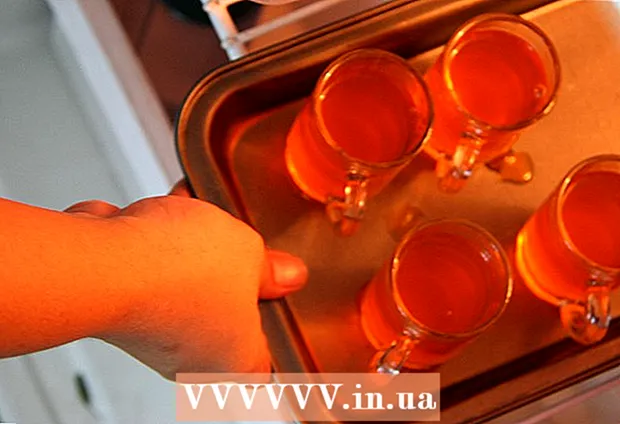Author:
Virginia Floyd
Date Of Creation:
10 August 2021
Update Date:
1 July 2024

Content
- Steps
- Method 1 of 2: Choosing Equipment and Material
- Method 2 of 2: Correct Methodology
- Tips
- Warnings
When welding metal in an inert gas atmosphere, a consumable electrode in the form of a wire and a shielding gas, which is constantly supplied through a welding torch, are used. Compared to steels, some modifications are necessary in the case of aluminum welding. Aluminum is much softer than steel, so the wire must be fed faster. Also, aluminum has a higher thermal conductivity, therefore, when welding it, stricter control of the supplied power and the speed of supply of the consumable electrode is required.
Steps
Method 1 of 2: Choosing Equipment and Material
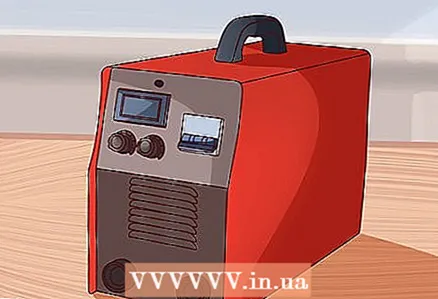 1 The thicker the metal, the more powerful the welding machine you will need. The 115 V machine is suitable for welding up to 3 mm (one-eighth of an inch) aluminum sheet with suitable preheat; The 230 V machine can weld plates up to 6 mm (quarter inch) thick. If you are welding aluminum on a regular basis, purchase a machine that gives an output current of more than 200 amperes.
1 The thicker the metal, the more powerful the welding machine you will need. The 115 V machine is suitable for welding up to 3 mm (one-eighth of an inch) aluminum sheet with suitable preheat; The 230 V machine can weld plates up to 6 mm (quarter inch) thick. If you are welding aluminum on a regular basis, purchase a machine that gives an output current of more than 200 amperes.  2 Select a suitable shielding gas. Unlike steels, which are often welded using a mixture of argon and carbon dioxide (CO2), aluminum requires pure argon. This does not require additional hoses, although you may need to remove the CO2 valves.
2 Select a suitable shielding gas. Unlike steels, which are often welded using a mixture of argon and carbon dioxide (CO2), aluminum requires pure argon. This does not require additional hoses, although you may need to remove the CO2 valves. 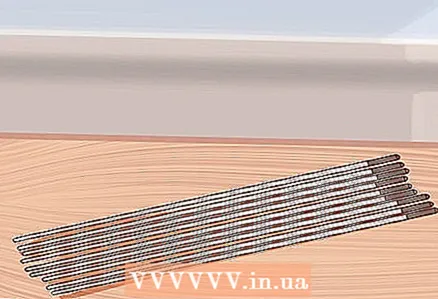 3 Use aluminum electrodes. The diameter of the electrode is especially important when welding aluminum, so the range of acceptable thicknesses is extremely small. Thinner wire is more difficult to feed, and thicker wire requires more current to melt it. Aluminum welding electrodes must be less than one millimeter (35th part of an inch) in diameter. 4043 grade aluminum alloy is one of the best electrode materials. Wire made from harder aluminum alloys, such as Alloy 5356, is easier to feed, but will require more current to melt.
3 Use aluminum electrodes. The diameter of the electrode is especially important when welding aluminum, so the range of acceptable thicknesses is extremely small. Thinner wire is more difficult to feed, and thicker wire requires more current to melt it. Aluminum welding electrodes must be less than one millimeter (35th part of an inch) in diameter. 4043 grade aluminum alloy is one of the best electrode materials. Wire made from harder aluminum alloys, such as Alloy 5356, is easier to feed, but will require more current to melt.
Method 2 of 2: Correct Methodology
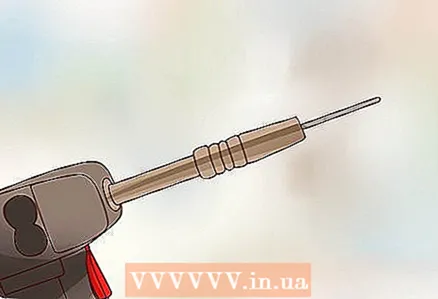 1 Feed the electrode using the dedicated feeder. Such a device can be purchased and it is convenient for feeding soft aluminum wire for the following reasons:
1 Feed the electrode using the dedicated feeder. Such a device can be purchased and it is convenient for feeding soft aluminum wire for the following reasons: - Wider holes at the ends of the contact. When heated, aluminum expands more than steel. This means that larger holes are needed at the point of contact compared to those used when feeding steel wires of the same diameter. However, the holes should not be very large to ensure good electrical contact.
- U-shaped feed rolls. When feeding soft aluminum wire, it is necessary to use rolls that do not lead to its deformation. The inlet and outlet guides must not scrape the wire. For the supply of steel, V-shaped guide rolls are used, which are just intended for scraping the wire.
- Non-metallic guides that also serve to reduce friction when passing soft wire over them.
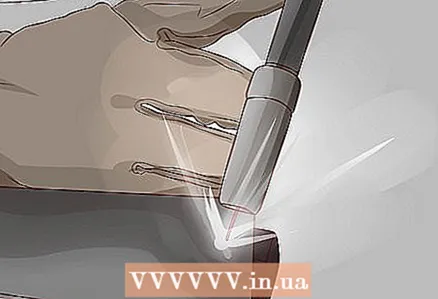 2 Keep the torch cable as straight as possible without kinking. Soft wires are easily bent and twisted, which can cause interruptions in wire feed.
2 Keep the torch cable as straight as possible without kinking. Soft wires are easily bent and twisted, which can cause interruptions in wire feed.
Tips
- The most weldable aluminum alloys are also the least hard. Many aluminum alloys are not weldable at all.
- After the weld is formed, anneal it - this will increase the strength of the heat-hardened aluminum alloys.
- Generally, the strength of an aluminum weld is lower than that of the base material.
Warnings
- When welding, use clothing that completely covers your hands and feet, including gloves. Flying sparks and splashes can cause burns if in contact with skin.
- Always wear a welder's mask when welding. In no case should you look directly at the welding arc, even if you are wearing such a mask.



